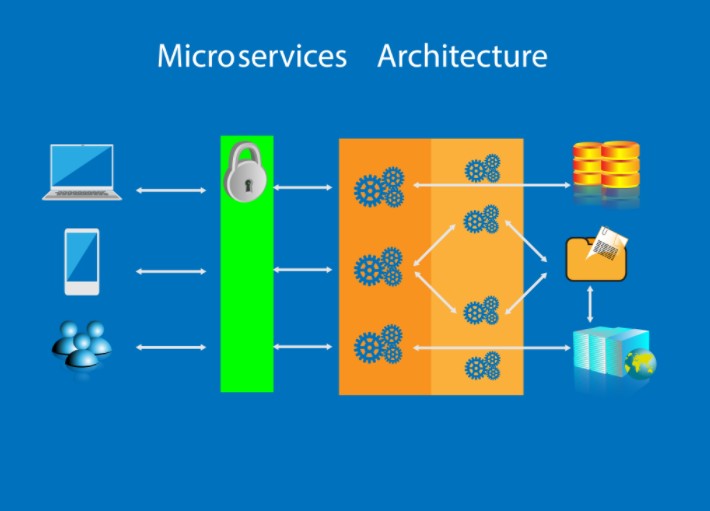What Are The Best Advantages Of Micro-services Architecture For Enterprises?

Micro-services also known as Micro-services Architecture is traditionally an approach towards software development in which a large application is built in the form of small, scalable, independently versioned and customer-focused services or components which communicate with each other via simple Application Program Interfaces (APIs) over standard protocols.
One of the main reasons for the popularity of Micro-services architecture is that applications become very easier to build and maintain when they are broken into smaller modules. Each module or component is developed separately and the final product or application is the sum of all these components or constituents. The process of building applications through this architecture is made easy and simpler for the developers.
Decentralized Approach: In this kind of architecture, development teams can adopt a decentralized approach to building software applications. Application(s) can be broken down into smaller services or components and each of these services can be built, deployed, and managed independently of others. These specific smaller services or components can also be redeployed independently without compromising the integrity of the application.
Increases Autonomy: Since each development team is focused on its own component or service, it increases the autonomy of these teams as far as ideas, development, and deployment are concerned. The coordination with and interference from the larger IT delivery function is greatly reduced even as it gives developers a lot of freedom.
Easy to add new features: If developers wish to add new features to the existing application, they need not re-write the entire application, they can just add these new features independently. Not only that, the smaller services or components of the application can be scaled up and deployed separately.
Easier to maintain: Smaller code bases are easier to maintain and even save a lot on development time and efforts leading to higher levels of productivity. Also, codes for different services can be written separately and these codes can be organized on business capabilities.
Easy to learn and implement: One of the biggest advantages of Micro services architecture is that it’s very easy to understand since it’s all separate specified components or services making it very easy to modify. This also helps newcomers or new developers to easily understand and quickly learn thus saving time and efforts and subsequently contributing to resource productivity.
Scalable and Efficient: Micro-services help identify scaling bottlenecks and resolve these bottlenecks. Based on requirement this architecture can be scaled up and reused. It can also be easily integrated with third-party services and since it also enables continuous delivery, micro-services architecture helps in achieving higher efficiency.
Flexible for New Technology Stacks: The architecture eliminates long-term commitment to any single technology stack as it allows developers to try out newer technology stacks on individual components even as it decreases dependency concerns.
Quality Code: This sort of architecture promotes higher quality code even as it simplifies the development process. Another advantage is that it can be managed by smaller development teams thus ensuring resource efficiency.
Data Output and Insights: Micro-services actually simplify data extraction for end users. An integral part of the micro-services architecture is the—publish and subscribe framework, that enables data processing in real-time resulting in delivery of immediate data output and insights.
Easy to Assess Updates: Highly advanced analytics environments need ways to assess existing computational models with newly adopted modules. Multivariate and A-B testing in Micro-services architecture enables users to validate their updated modules.
System Resilience: Since the services or components are independent of each other, any changes in certain services will only affect the related features and not the entire application. Micro-services provide the required system resilience making the application less vulnerable and more stable.
Simplifies Security Monitoring: Micro-services simplify security monitoring as various components of the larger application are isolated. A security concern in one component or service does not affect the other and can also be easily rectified.
 A few big companies have adopted Micro-services architecture and this has shown some tremendous results as it has in the case of Wal-Mart Canada where the company moved to micro-services resulting in significant business uplift for the company as shown in results below:
A few big companies have adopted Micro-services architecture and this has shown some tremendous results as it has in the case of Wal-Mart Canada where the company moved to micro-services resulting in significant business uplift for the company as shown in results below:
Sweden based online music delivery firm, Spotify is another example of a company that is built on Micro-services architecture. Spotify serves about 75 million active users per month with an average session length of 23 minutes that requires massive operational efficiency and this is catered to by a micro-service architecture that is managed by autonomous full-stack teams to ensure smooth operations. So, the advantages of Micro services architecture are quite in number for major companies to move towards embracing this concept.
